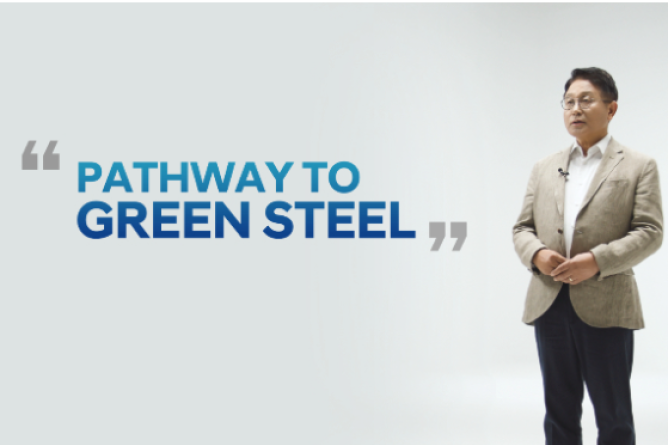Carbon neutrality
Hyundai Steel unveils carbon neutrality roadmap
The S.Korean steelmaker aims to reduce its carbon emissions by 12% from current levels by 2030
By Apr 26, 2023 (Gmt+09:00)
1
Min read
Most Read
LG Chem to sell water filter business to Glenwood PE for $692 million


Kyobo Life poised to buy Japan’s SBI Group-owned savings bank


KT&G eyes overseas M&A after rejecting activist fund's offer


StockX in merger talks with Naver’s online reseller Kream


Mirae Asset to be named Korea Post’s core real estate fund operator



South Korea's steelmaker Hyundai Steel unveiled on Wednesday its "Carbon Neutrality Roadmap" aimed at reducing its direct and indirect carbon emissions by 12% by 2030 and achieving NetZero by 2050.
The company explained that it has developed a roadmap to comply with carbon emission regulations in each country, including the European Union's "Carbon Border Adjustment Mechanism" (CBAM) and the US's "Global Sustainable Steel Alliance" (GSSA). To establish a production system for high-end, low-carbon automotive steel while maintaining product quality, Hyundai Steel plans to use an electric arc furnace-basic oxygen furnace (EAF-BOF) complex process.
As the first step, the company will mix low-carbon pig iron, produced using existing electric arc furnaces, with the blast furnace iron-making process. In the second step, Hyundai Steel plans to introduce a new electric arc furnace that will reduce carbon emissions by about 40% by 2030. The company plans to sell low-carbon products under the brand "High Eco Steel" by applying its low-carbon product production system, "High Cube," in the new electric arc furnace.
"Carbon neutrality is not a choice but a necessity," An Tong Il, CEO of Hyundai Steel, stated. "Advanced countries around the world are focusing on protecting their domestic industries and enhancing competitiveness in connection with climate change," he added.
On the same day, Hyundai Steel announced its first-quarter sales of 6.39 trillion won ($4.7 billion) and operating profit of 333.9 billion won, representing an 8.5% and 52.1% decrease, respectively, from the same period last year. Although the company recorded an operating loss in the fourth quarter of last year, its performance improved from the previous quarter as it resolved one-time costs, such as typhoon damage recovery expenses.
Write to Jae-Fu Kim at hu@hankyung.com
More to Read
-
 SteelHyundai Steel's sustainability report wins gold prize in US
SteelHyundai Steel's sustainability report wins gold prize in USFeb 27, 2023 (Gmt+09:00)
1 Min read -
 SteelHyundai Steel co-hosts symposium on low-carbon construction materials
SteelHyundai Steel co-hosts symposium on low-carbon construction materialsFeb 15, 2023 (Gmt+09:00)
1 Min read -
 SteelHyundai Steel unveils steel sheets with 30% reduction in carbon emissions
SteelHyundai Steel unveils steel sheets with 30% reduction in carbon emissionsSep 14, 2022 (Gmt+09:00)
1 Min read
Comment 0
LOG IN


